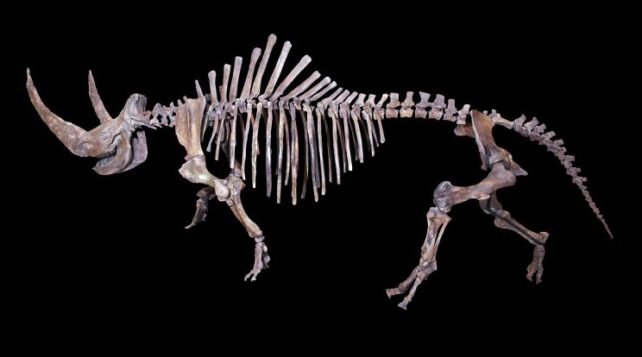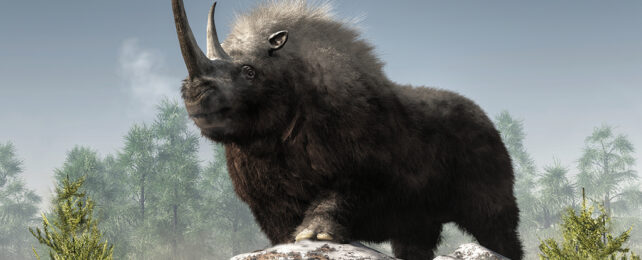We may have been overlooking a surprisingly rich source of ancient DNA.
Scientists have managed to reconstruct the mitochondrial genome of extinct wooly rhinoceros (Coelodonta antiquitatis) – from DNA extracted from the fossilized feces of the cave hyenas (Crocuta crocuta spelea) that dined thereon.
It's the first genome that has been recovered for wooly rhinos in Europe; all previous genomic data on the species came from Siberian animals. This can perhaps give us some clues about regional differences between herds of the rhinos – but it also suggests that fossilized feces, or coprolites, could be a valuable resource.
"The mitogenome assemblies produced here are the first mitogenomic records of European wooly rhinoceros and are thus an important resource to help resolve the phylogeography of this iconic Pleistocene megafauna species," the researchers write in their paper.
"The fact that these were retrieved with relative ease from a coprolite of another species (i.e. no remain associated directly to wooly rhinoceros was needed) stresses the value of obtaining genomic data from a wide range of materials."
Actually, coprolites are turning out to be quite a historical gold mine. From preserved faeces we can work out what people and animals ate in ages past, pore over the parasites they were infected with, and even study changes in the human gut microbiome.
A team led by molecular biologist Peter Andreas Seeber of the University of Konstanz in Germany studied two fossilized hyena poops from the Middle Paleolithic in what is now Germany, a period that spanned from around 300,000 to 30,000 years ago.
These coprolites had been excavated and were sitting in museum collections, as many coprolites now do. A paper published last year asserted that coprolites in museum collections are an overlooked and underutilized resource in the study of our planet's biological history.
Seeber and his colleagues used a special tool to extract material from inside the coprolites, prepared the DNA for reading, and ran the results through a DNA sequencer.
The DNA was degraded; but the researchers managed to recover genetic material from both cave hyena and wooly rhino, comparing them against other genomes, both modern and ancient.
And, although the rhino DNA was obtained from just a single sample, it was able to tell the researchers something new about the species and its diversification across the Eurasian landmass.

In fact, there was enough of a difference between the European rhino that ended up as hyena chow and the Siberian rhinos to suggest that the two groups had started to diversify, quite some time ago. The European rhino started to split sometime between 2.5 million and 150,000 years ago.
This is a direct contradiction of the hypothesis that the rhinos made repeated range expansions into Western Europe during the late Pleistocene, at least for the crash this particular rhino belonged to.
Further recovery and analysis of the DNA of these ancient, majestic rhinos would help reveal more about their history, even if we have to recover it from something as decidedly unmajestic as poop.
"As with these samples," the researchers write, "many archaeological objects retrieved in past excavations and existing in collections, are to date a largely overlooked source of ancient DNA."
The research has been published in Biology Letters.
